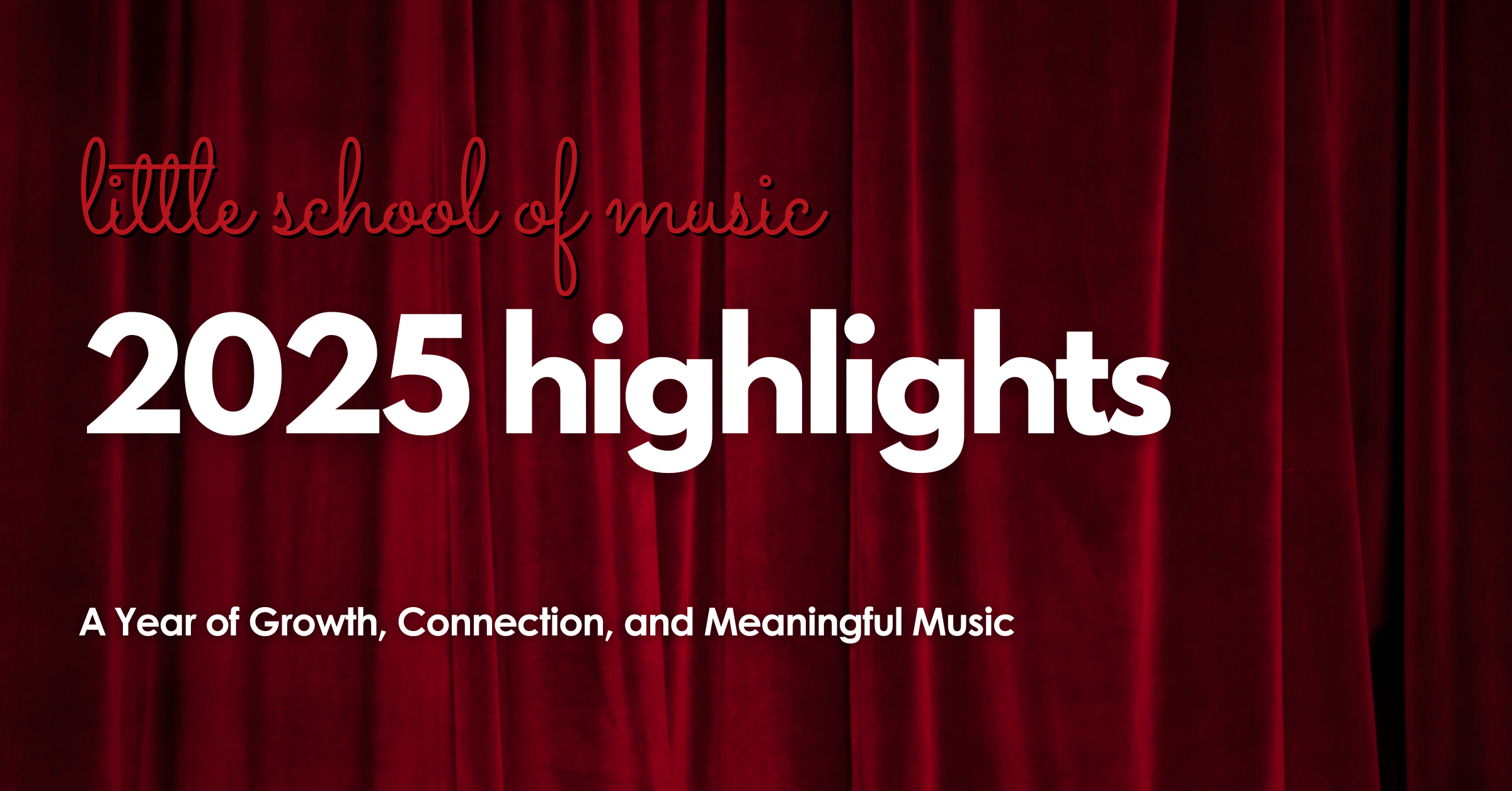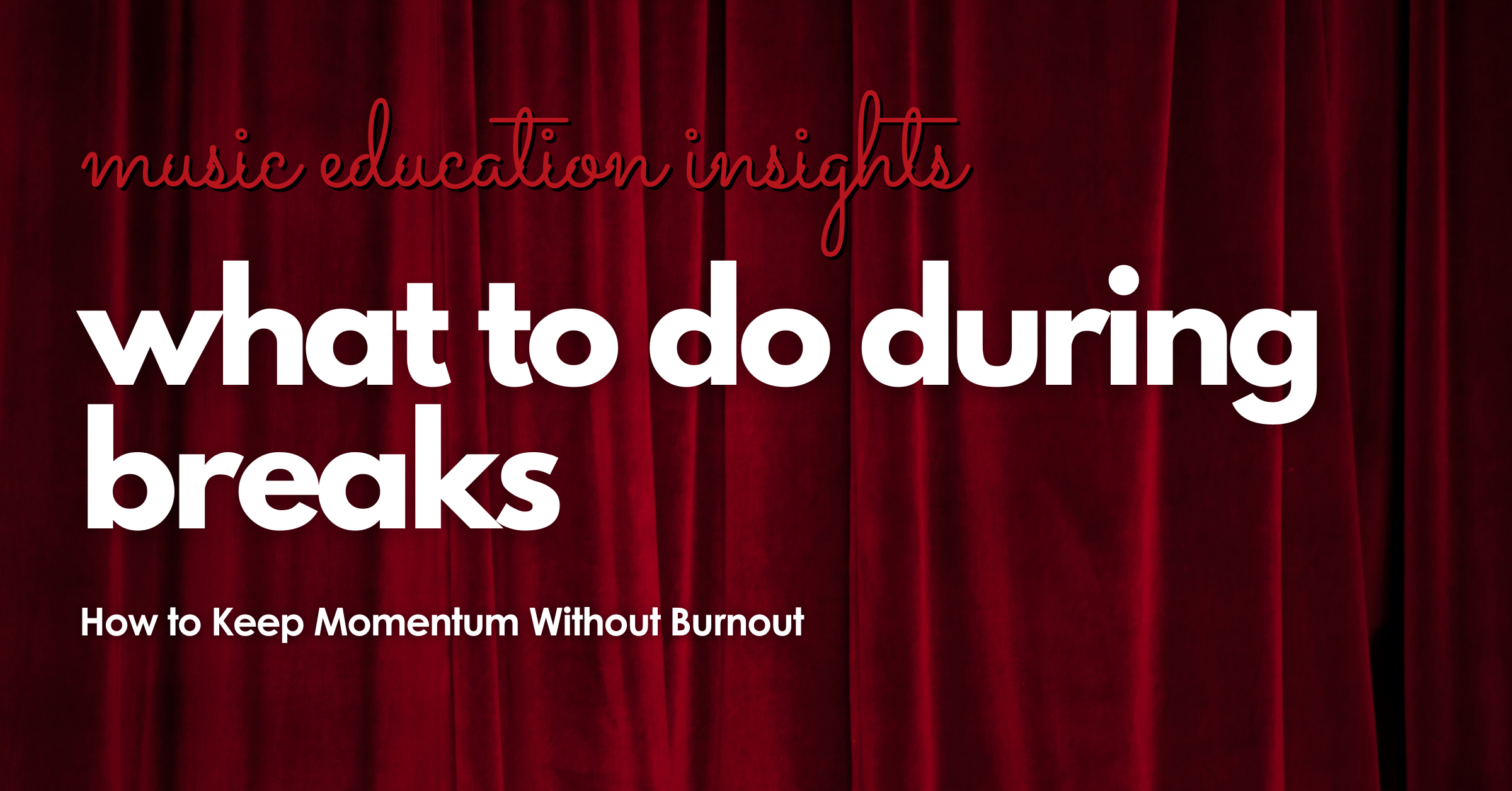6 Tips for Music Teachers
by Mindy Cabral
1. Create a Custom Structured Curriculum
Include method books, RCM books, Rockschool Books, technique books, sight reading books, duet books, popular songs, sheet music, technology, and other creative materials and approaches that help the students relate to what they are learning, progress, and move towards achieving their set goals.
Most teachers do not have a written plan. They have ideas of what they want to teach, and what might be level appropriate, but writing this down and creating a list as detailed or flexible as you want will help you stay organized while also showing your practicing expectations and materials requirements to your students.
Having too many handouts and bouncing around too much between music can cause confusion and make it hard for you and your students to keep track of assignments. Students won’t know what to bring to lessons and teachers often don’t remember what was already covered.
In general, select one or two method book series that fit the student’s age, level, and interests and stick with them. Students will know what to bring each week, what to practice, and get the satisfaction of working their way through the book. They love getting to the final pages and moving up to a new book! It’s another achievement marker and lines up with the LSM Levels Program.
Select the appropriate books/music and stick with it! Create a written outline in order of what you would like students to learn and practice. Be thoughtful and realistic in your planning. Consider time constraints and be clear as to what your practice expectations are. Include well-rounded musicianship skills and stay flexible in your teaching.
2. Include Fundamentals in Each Lesson
Lessons can feel short no matter how long they are. Teachers often skip right to the repertoire to get as much “work” done as possible. THIS IS A MISTAKE. The fundamentals ARE the most important work. Solid fundamentals make it easier to play your instrument and will lead you to be able to play the music you want to perform.
Fundamentals also help students focus, understand the elements of music they are putting together in the repertoire, and refine and sharpen their skills beyond what is required for the repertoire so the music “feels easy” to play. This results in a more enjoyable and relaxed performance.
Play fundamentals at every lesson with your students. Keep students engaged with a variety of exercises, scales, chord patterns, and arpeggios that help develop tone and color production, dynamic range, intonation, articulation, flexibility, etc. Incorporate musicianship skills such as rhythm clapback/reading, melody playback/reading, etc. This can be in an exam type format, or as a fun game! Get creative! Then help them apply those fundamentals to their music.
Working through fundamental exercises in lessons also allows you to diagnose and address problems quickly. Be sure to spend time on all aspects of fundamentals and highlight areas that may need more attention to strengthen these areas.
Professional musicians know that practicing fundamentals is essential. Students don’t, so don’t skip them in lessons.
3. Find Out What Students Want from Their Lessons
It’s critical to be on the same page as your students about what they want out of lessons. What you want for your student may not be the same as what they want, or what their parents want. If you aren’t on the same page, student progress will be very slow, if they progress at all.
Some students want to be great musicians, and some just want to learn a song for a treat and move on to the next one. This is important to know so you can adjust your curriculum accordingly.
As professional teaching artists, (professional musicians who teach), you are an exception when it comes to dedication and commitment to playing music. You probably practiced many hours a day, played in every music ensemble possible, listened to the latest music, and so on. Avoid comparing yourself and your immersive experience with music to what your student should be doing. Your expectations will be too high for the average student.
Not every student has an hour a day to practice. Not every student can or wants to play the hardest music. Don’t compromise your standards, but communicate regularly about how lessons are meeting the student’s needs.
Ask your students what they hope to get out of lessons. What do they like learning? What do they need the most help with? What are their goals? The clearer you both are on this, the happier everyone will be.
4. Avoid Repertoire That is Too Difficult
“Etudes and fundamentals should push our technical boundaries. Solo repertoire should showcase that growth!”
Having a good challenge is important for many reasons. It pushes the boundaries of what students believe they can do, keeps them motivated to level up, and teaches them about consistency and a strong work ethic. Some music teachers make the mistake of selecting solos that are way too demanding. This can result in a lot of stress, anxiety, and heartbreak for students. Solo pieces are really the only opportunity students have to showcase their individual talent so they should do just that.
It’s a delicate balance to select a piece that is interesting but still fun and manageable to play. When in doubt, select something you know they will have enough time to learn, especially if you know they have limited practicing time.
If a student brings in a piece that is too demanding at their current level, evaluate/analyze the piece together so they understand what kind of work they need to put in to play the piece well. Talk about what technical skills or other abilities are required to be able to learn and perform that piece. If there is a section they can learn that is appropriate, or if you can modify the music to be playable, you could consider teaching it to them. You can also use that piece as a dangling carrot, so when the student is at (or approaching) the level to be able to play the piece, you can start teaching it to them.
You may want to have a list of “back pocket big hits” or fun music for each level that students enjoy learning and playing. This can really help get students out of a slump and push them to continue if the music starts to feel flat.
Select repertoire according to the student’s current playing level, not what you hope they can play in a month or two. If the student gets bored, focus on enhancing the musicality of the solo and relate the music to other things in their life, a story, or an image. Have them tell you what the piece means to them, or could mean to someone else. A simple musical performance is better than watching a student struggle through a piece that is beyond their capability.
5. Communicate with Parents and Other Music Instructors
Communication is essential to establish good relationships. You have a business relationship with the students, their parents, and their other music instructors. These people can influence how lessons are going, so communicate often through the appropriate means.
You can learn a lot by checking in with other music teachers between lessons, such as how they are doing in their music ensemble, or with their musical interests outside of their lessons such as with songwriting or music technology. Parents can also be a huge help when it comes to managing at-home practice.
Emailing lesson notes to the parent after each lesson can be very helpful. Even if they have the Google Folder link, sending a quick, short email about how the lesson went shows you care and are keeping track of the student. Keeping notes and sharing them with the parent also helps everyone know exactly what was worked on and what the student should prepare for the next week.
Be clear and specific. Most parents do not have a musical background and have no idea what or how their child should be practicing. They need to learn everything from what to play to how to practice it. They will also ask you how much time it should take. Address these questions in advance so they feel comfortable and understand the expectations. Parents need to know how they can help their child, even if they don’t have a musical background themselves.
Keep your lines of communication open! Parents always appreciate hearing from teachers as to how their children are doing and what they should be doing at home. This is also an opportunity to make sure instructions are clear and keep parents informed to help avoid any surprises or misunderstandings.
6. Continue Learning and Growing as a Teacher
We’re all human, so don’t be afraid to try things and make mistakes. Get out of your comfort zone and give yourself opportunities to improve your teaching skills. Teachers learn alongside students and together we all grow. Think about what you have learned from a student recently. How did you feel discovering something new?
If you find yourself shrugging your shoulders, becoming frustrated with people or with a situation and aren’t sure how to respond you should reach out for help. Don’t let these concerns drag on and become bigger problems later. No one is perfect and we could all use a fresh perspective sometimes. The Studio Director and Lead Instructors are there for you with ideas and guidance from years of experience.
A few things to watch out for include:
- Parents asking about how to help get their child to practice at home
- Students starting to lose interest in playing
- Students not showing up to lessons often
- Lack (or fear) of performance participation (this could be due to pressure from parents, teachers, or themselves)
- Students who are perfectionists and very self-critical
- Parents who may be very critical of their child and have too high expectations
These are some of the reasons students stop their music lessons. If addressed early on they won’t become major problems, but rather challenges to overcome as part of the natural learning process.
Professional development sessions and community forms are a great way to keep up on new materials, publications, approaches, technology tools, and teaching methods. Search for new musical topics to present in lessons. Talk to other teachers about what they do. Ask questions and offer help. Stay open to suggestions and new ideas, and share your own too! When you stop learning you stop growing as a teacher.
If you enjoy teaching, students will enjoy learning!



